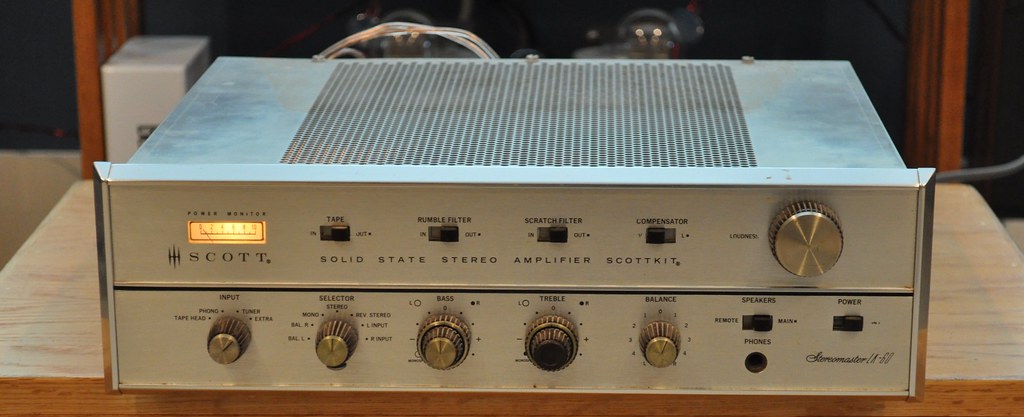ScottFan355
Super Member
What year would people say solid-state came into it's own and could reasonably compete with the sound of tubes?
According to my father, it was the mid-to-late 1970s. Up to that point, he'd been building and servicing his own tube amps.What year would people say solid-state came into it's own and could reasonably compete with the sound of tubes?
 HH Scott LK60 DSC_0789 by Mark Hardy, on Flickr
HH Scott LK60 DSC_0789 by Mark Hardy, on Flickr Scan0008 by Mark Hardy, on Flickr
Scan0008 by Mark Hardy, on Flickr

In my opinion, it took two distinct jumps before SS killed off tubes entirely. That said, tubes were killed off by the massive solid state push before solid state was mature enough to be superior IMO.
The first was when manufacturers stopped taking tube designs that had germanium transistors patched in and started designing solid state from the ground up. Chassis designs stopped having point to point and grommeted transistors where tubes had once been and PCBs were used, creating quieter, better performing designs.
The second major jump IMO was silicon and particularly Japanese high powered complementary silicon, which meant we could finally connect our speakers directly to the output devices. Everything improved massively with complementary push pull silicon, so I reckon about 1972/3 was about the point where coupling caps and quasi complementary designs were essentially old hat for all manufacturers.
From then on, solid state just got better and better until IMO, a performance plateau was reached around 1989/90 when the Japanese economy ground to a halt, and with it, the massive R&D budgets of yore.
1967What year would people say solid-state came into it's own and could reasonably compete with the sound of tubes?
Agreed, except for the high end gear. Although I do recall Dual's high end entry around that time mimicking Oracle's platform. Don't remember the model but it was just pure junk, all plastic, very cheaply made, for a cool grand.Makes sense, I can attest to at least the second part. I was in audio retail mid 80's to early 90's and I saw things halt and actually go backwards with respect to build quality in that period.
Gotta agree here. Add properly restored Marantz model 15, 16 and 16B SS power amps and boy do they sound good. I restored a model 33, the one after the 7T and a matching model 16 a couple years ago. Some late '60's and early '70's SS equipment was pretty nice.I suspect stuff came before but Mac was selling MC250s in '67
It wasn't all junk out of the gate. There was (probably still is a learning curve)
Marantz 7T preamp '65
3# series sansuis '67
